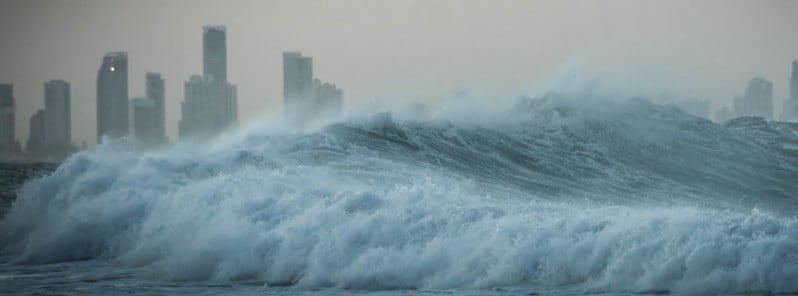Model unlocks real-time estimation of large earthquakes and provides earlier warning of tsunamis

Recently discovered speed-of-light prompt elastogravity signals (PEGS) have raised hopes for rapid and reliable estimation of large earthquake magnitude (above M8) to help mitigate the risks associated with strong shaking and tsunamis.
- PEGS allowed the creation of a new model that could deliver more reliable size estimates of large-magnitude earthquakes. This is crucial, particularly for predicting tsunamis, which often take an extra 10 or 15 minutes to arrive.
While PEGS have not been tested for operational early warning, researchers show they can be used in real-time to track earthquake growth instantaneously after the event reaches a certain magnitude.
“We develop a deep learning model that leverages the information carried by PEGS recorded by regional broadband seismometers in Japan before the arrival of seismic waves,” study authors, led by Andrea Licciardi, said.1
“After training on a database of synthetic waveforms augmented with empirical noise, we show that the algorithm can instantaneously track an earthquake source time function on real data.
“Our model unlocks ‘true real-time’ access to the rupture evolution of large earthquakes using a portion of seismograms that is routinely treated as noise, and can be immediately transformative for tsunami early warning.”
Researchers used hundreds of thousands of simulated earthquakes before testing the model on the real data set from 2011 M9.0-9.1 Tohoku earthquake.2
The model accurately predicted the earthquake’s magnitude in about 50 seconds—faster than other state-of-the-art early warning systems.
“The gravity signals are too weak to be used for detecting earthquakes smaller than magnitude 8.3 with current technology, and the system is unlikely to provide much extra advance warning in earthquake zones that are already blanketed in seismometers,” says Richard Allen, a seismologist at the University of California, Berkeley.
However, they could deliver more reliable size estimates of large-magnitude earthquakes, which is crucial, particularly for predicting tsunamis, which often take an extra 10 or 15 minutes to arrive, Allen says.
“With this technique, seismologists in Japan could have accurately determined Tohoku’s magnitude and issued proper alerts 1 or 2 minutes after the beginning of the earthquake,” said Jean-Paul Ampuero, a seismologist at Côte d’Azur University and co-author of the paper.
“In 2011, it took hours. It would have been fantastic.”
References:
1 Instantaneous tracking of earthquake growth with elastogravity signals – Andrea Licciardi et al. – Nature – May 11, 2022 – DOI https://doi.org/10.1038/s41586-022-04672-7 – OPEN ACCESS
2 Gravity signals could detect earthquakes at the speed of light – Science – May 11, 2022
Featured image credit: Petra Bensted

That may be (PEGS). But if you think that they will tell YOU about it (the EQ), you’re very much Low IQ!!